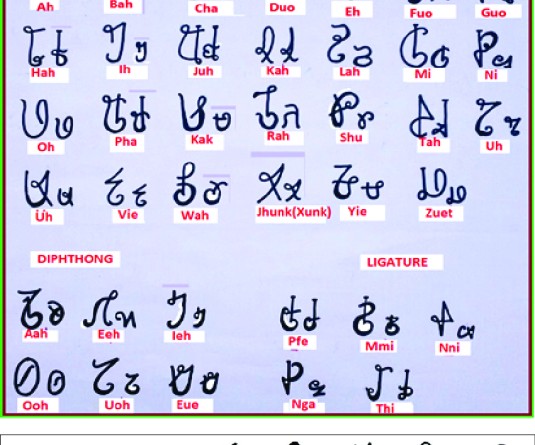
Dr RB Thohe Pou
In India’s rapidly digitizing identity system, Aadhaar has emerged as a powerful tool — intended to streamline public services and welfare delivery. But in reality, it has become something far more influential: a “master key” that unlocks access to nearly every other official document, including the Indian passport.
This growing trend, though convenient, raises a fundamental concern — how a document meant for residents is being used to grant citizenship-level privileges, and in some cases, to non-citizens.
Aadhaar’s Legal Status: Proof of Identity, Not Citizenship
In the landmark Supreme Court judgment of Justice K.S. Puttaswamy (Retd.) vs Union of India (2018), the five-judge Constitution Bench made it clear that Aadhaar is not proof of citizenship.
Yet in today’s reality, Aadhaar has effectively become a de facto proof of citizenship. Once a person obtains Aadhaar, they can access a cascading chain of identity documents — from PAN cards to voter IDs and even passports. Thus, Aadhaar has become a substitute for citizenship proof, even though it was never meant to be.
How Aadhaar Becomes a Gateway to the Passport
Although the Passport Act, 1967 mandates that only Indian citizens can receive passports, in practice, many applicants are using Aadhaar as the primary — and often sole — document for:
• Proof of Identity (photo, name, biometric)
• Proof of Address (as mentioned on Aadhaar)
• Proof of Date of Birth (if full DoB is listed)
In rural and semi-urban areas, Aadhaar is frequently treated as sufficient — and when combined with a smooth police verification process, a passport is often issued without deeper scrutiny.
The Identity Chain: From Aadhaar to Citizenship Recognition
In many cases, Aadhaar becomes the first step in building a complete legal identity. Once Aadhaar is obtained — sometimes through questionable documentation — individuals go on to secure:
Aadhaar → PAN card → Voter ID → Driving Licence → Bank Account → Passport
Each document builds on the other, creating a layered identity that is difficult to challenge or reverse later, even if the original Aadhaar is fraudulent or based on residency rather than citizenship.
The Village-Level Loophole: Aadhaar Begins in the Hills
In Manipur’s hill districts, the Aadhaar enrolment process is often facilitated by local village authorities. Here, even illegal immigrants can easily obtain Aadhaar using documents issued at the village level:
• Address proof is provided by the Village Chairman or Secretary, often without cross-verification.
• Date of Birth certificates are issued by local Primary Health Centres (PHCs), frequently based on oral declarations or handwritten clinic records.
With these two documents in hand, Aadhaar enrolment becomes a straightforward task. Field officers rarely challenge the authenticity of such village-issued documents. In border villages, this opens the door for undocumented migrants to slip into India’s formal identity ecosystem.
Once Aadhaar is issued, all other documents — including the passport — can be obtained based on it, completing a false but legally valid identity chain.
In a recent meeting held in Imphal, Manipur adopted one of the most stringent processes for issuing adult Aadhaar. The process is based on MHA and UIDAI guidelines. It has been decided that each adult Aadhaar application must be scrutinized and approved only at the state HQ level, in the office of the Special Secretary (Home). This move in Manipur is a necessary and commendable step. However, when an adult possesses all the required documents for Aadhaar enrolment, it may still be difficult to determine the genuineness of the documents. For genuine residents of Manipur, denial of Aadhaar could lead to unnecessary hardship.
National Security Concerns
There have been reported cases of illegal immigrants acquiring Aadhaar and subsequently using it to obtain Indian passports and voter IDs. This poses a serious national security risk, especially in border-sensitive states like Manipur.
This silent misuse of Aadhaar as a gateway to citizenship undermines the very purpose of having citizenship-specific documents and weakens the credibility of Indian identity systems.
Government Measures and the Road Ahead
To address this issue, the Indian government has implemented several measures:
• Biometric de-duplication and facial recognition
• Linking Aadhaar with PAN and Voter ID
• NRC and NPR exercises in border states
• Digital KYC verification for passports and financial services
However, on-ground enforcement remains weak, especially in rural and tribal areas, where local influence often overrides central policy. Until this gap is bridged, Aadhaar will continue to be used — and misused — as a master key to full legal identity.
Conclusion
Aadhaar was never meant to determine who is a citizen. But in practice, it has become the practical proof of citizenship in the eyes of many institutions and agencies. This transformation — from a resident ID to an all-access document — is occurring quietly but dangerously.
Unless stricter regulations are introduced and enforced at the grassroots level, the gap between legal intent and on-ground reality will continue to grow, allowing anyone with a village-issued document and an Aadhaar card to climb the ladder of Indian identity.




